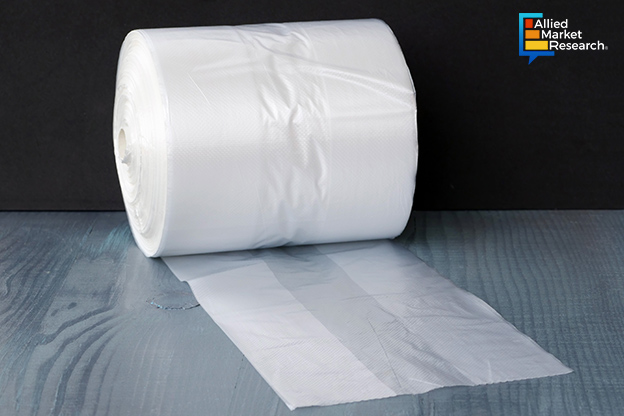Tracking the Shift in Food Packaging Industry due to Introduction of Biodegradable Films and Compostable Plastics

16 Oct
2023
Biodegradable films are films made from plastic; however, certain additives are added to plastic during manufacturing which help in breaking down the plastic. Hence, biodegradable films are also called compostable plastics. In certain cases, instead of additive-based plastic, compostable films are made from starch and cellulose. Both these types offer excellent protection against moisture and contamination, in addition to being eco-friendly.
Biodegradable films in food packaging industry
Plastic pollution has been one of the biggest threats to the environment in the past few decades. The food processing industry is one of the biggest plastic waste generating sectors. Hence, it has been severely criticized by civil societies and environmentalists for their contribution to plastic pollution. Apart from this, several governments have enacted laws to curb plastic pollution. Both these factors have brought paradigm shift in the food processing industry. Biodegradable films are slowly replacing traditional petroleum-based films for packaging both liquid and solid food items.
Biodegradable films are generally manufactured using biopolymers. Today, biodegradable films are used to manufacture paper boards, containers, pouches, edible coating, egg trays, etc. In the past few years, biopolymers are manufactured using various raw materials like whey protein isolate, gluten, zein, chitosan, and soy protein isolate. Zein and whey protein isolates increases tensile strength of the film, while at the same time, offering excellent moisture barrier properties. Even gluten and chitosan provide good mechanical strength to the films. Chitosan also offers anti-fungal and antimicrobial properties to compostable plastics. Such plastics can then be used to package perishable food items so that they can be stored for a long time. Certain raw materials like gluten provide oxygen and carbon dioxide barrier which increases the shelf-life of the packaged food items.
Growth drivers of the market
The biodegradable film market has experienced huge growth in the past few years. According to a market research report by Allied Market Research, the market may gather a revenue of $2.3 billion by 2032. The huge growth of this industry is owing to certain important trends in the market. Firstly, the wide applicability of compostable plastics in various end-use industries is the primary reason behind the growth of this market. Not just end-use industries, compostable plastics are also used in waste collection and landfill due to their obvious biodegradability advantage. Another reason behind the growth of this industry is the rise in environmental awareness among people across the world. As a result, the demand for biodegradable plastics has increased, thereby fueling the growth of the market.
The strategic alliances by leading companies of the market are also having an indirect positive impact on the industry. These strategic alliances help not just the involving parties but also the market, in that, they expand the scope of the industry. For instance, SK Capital, an investment company, announced the acquisition of Ecopol, a biodegradable films manufacturing company. Since SK Capital regularly invests in companies specializing in specialty materials and life sciences, this acquisition will help SK Capital to broaden its operations in the coming period.
The global biodegradable films market, thus, is being propelled by the increasing adoption of compostable plastics by the food packaging industry. Increasing environmental awareness across the globe will aid in the flourishing of the market in the coming period.

Koyel Ghosh
Author’s Bio- Koyel Ghosh is a blogger with a strong passion and enjoys writing in miscellaneous domains, as she believes it lets her explore a wide variety of niches. She has an innate interest in creativity and enjoys experimenting with different writing styles. A writer who never stops imagining, she has been serving the corporate industry for the last five years.
Avenue: Entire Library membership of Allied Market Research Reports at your disposal
- Avenue is an innovative subscription-based online report database.
- Avail an online access to the entire library of syndicated reports on more than 2,000 niche industries and company profiles on more than 12,000 firms across 11 domains.
- A cost-effective model tailored for entrepreneurs, investors, and students & researchers at universities.
- Request customizations, suggest new reports, and avail analyst support as per your requirements.
- Get an access to the library of reports at any time from any device and anywhere.
Related Post
-
How are Submarine Cables Transforming Global Connectivity with Enhanced User Experience?
-
Endoscopy Procedures: Transformations in Techniques and Applications
-
AI-Powered Video Analytics: How the Product Actually Works for enterprises
-
Painting Robots: Transforming Precision Coating and Creative Applications
-
Innovations in Pharmacovigilance Systems Advancing Patient Safety
-
Understanding Edge Security: Keeping Data Safe Near the Source
-
Exploring the Use and Advancements of 3D Laser Scanners in Professional Applications
-
Reinforcing Industrial Controls with Smarter Tools and Training








